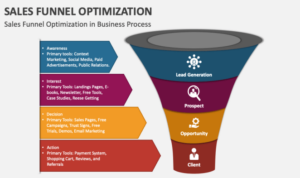Building Online Community Engagement starts with understanding the importance of connecting with online communities. From creating interactive content to utilizing social media platforms, this guide will explore effective strategies to foster a strong and engaged online community.
Learn how to build lasting relationships, drive participation, and manage online communities effectively.
Understanding Online Community Engagement
Online community engagement refers to the process of interacting and connecting with a group of individuals who share common interests, goals, or values through online platforms. This involves actively participating in discussions, sharing content, providing feedback, and building relationships within the online community.
The Importance of Engaging with Online Communities
Engaging with online communities is crucial for businesses, organizations, and individuals looking to establish a strong online presence and build a loyal following. Some key reasons why online community engagement is important include:
- Building Trust and Credibility: By actively engaging with the community, you can establish yourself as a trustworthy and credible source of information, products, or services.
- Increasing Brand Awareness: Engaging with online communities helps to increase brand visibility and awareness among a targeted audience.
- Driving Traffic and Conversions: By engaging with the community and sharing valuable content, you can drive traffic to your website or online platforms and increase conversions.
- Obtaining Feedback and Insights: Engaging with the community allows you to gather valuable feedback, insights, and opinions that can help you improve your products or services.
“Online community engagement is not just about promoting your brand, but also about building meaningful relationships with your audience.”
Examples of Successful Online Community Engagement Strategies, Building Online Community Engagement
Some successful online community engagement strategies include:
- Hosting Online Events and Webinars: Organizing online events and webinars can help you connect with your community in real-time and provide valuable information or entertainment.
- Creating Interactive Content: Developing interactive content such as polls, quizzes, or contests can encourage community members to actively participate and engage with your brand.
- Responding to Comments and Messages: Monitoring and responding to comments, messages, and mentions from the community shows that you value their feedback and are committed to building relationships.
- Collaborating with Influencers: Partnering with influencers or industry experts can help you reach a wider audience and build credibility within the community.
Building a Strong Online Community
Building a strong online community from scratch requires dedication and effort. It’s essential to create a welcoming environment where members feel valued and connected. Consistency in engagement and establishing clear communication channels are key to fostering a sense of community online.
Role of Communication in Nurturing Online Community Engagement
Effective communication is the backbone of any successful online community. Regularly updating members, sharing relevant information, and actively listening to their feedback are crucial for building trust and engagement. Utilizing various platforms such as social media, forums, and email newsletters can help facilitate meaningful interactions.
Tips for Fostering a Sense of Belonging Within an Online Community
- Encourage active participation: Create opportunities for members to share their thoughts, ideas, and experiences. Acknowledge their contributions and make them feel heard.
- Organize virtual events: Hosting webinars, live Q&A sessions, or online workshops can bring members together and strengthen bonds within the community.
- Promote inclusivity: Ensure that everyone feels welcome and respected regardless of their background or opinions. Foster a culture of diversity and acceptance.
- Provide valuable content: Offer resources, guides, and exclusive content that adds value to members’ lives. Make sure the content is relevant and addresses their needs.
- Celebrate milestones: Recognize and celebrate achievements, anniversaries, or special occasions within the community. This helps create a sense of belonging and camaraderie.
Utilizing Social Media Platforms

When it comes to online community engagement, social media platforms play a crucial role in connecting people and facilitating interactions. Businesses and organizations leverage these platforms to reach a wider audience, build relationships, and foster a sense of community among their followers.
Impact of Social Media on Online Community Engagement
Social media has revolutionized the way online communities interact and engage with each other. With the rise of platforms like Facebook, Instagram, Twitter, and LinkedIn, businesses now have a direct line of communication with their audience. They can easily share updates, respond to queries, and gather feedback in real-time, creating a more dynamic and engaging online community.
Comparing Different Social Media Platforms
- Facebook: With its large user base and diverse range of features, Facebook is great for building a community around a brand or organization. Businesses can create groups, pages, and events to engage with their audience.
- Instagram: Known for its visual content, Instagram is perfect for businesses looking to showcase products/services and connect with a younger demographic. Stories, IGTV, and reels are popular features for engaging followers.
- Twitter: With its fast-paced nature, Twitter is ideal for real-time conversations and updates. Hashtags, retweets, and replies help businesses engage with their audience and stay relevant in trending topics.
- LinkedIn: Geared towards professionals and B2B interactions, LinkedIn is a valuable platform for networking, sharing industry insights, and building a community around thought leadership.
Examples of How Businesses Leverage Social Media for Community Engagement
- Starbucks: The coffee giant utilizes Instagram to showcase user-generated content, run contests, and interact with customers through comments and direct messages.
- Nike: Nike engages with its audience on Twitter by sharing updates on new product launches, responding to customer inquiries, and participating in conversations around sports and fitness.
- Lululemon: Known for its active community, Lululemon uses Facebook to create local events, share workout tips, and foster a sense of belonging among its followers.
Creating Interactive Content: Building Online Community Engagement

Creating interactive content is crucial for engaging online communities as it allows members to actively participate, share their thoughts, and connect with each other. Interactive content can come in various forms such as polls, quizzes, surveys, live streams, challenges, and interactive infographics.
Ideas for Creating Interactive Content
- Host live Q&A sessions with community members to answer their questions in real-time.
- Create interactive polls to gather opinions on relevant topics and encourage discussions.
- Organize contests or challenges that require participation and creativity from the community.
- Develop interactive infographics or videos to present information in a visually engaging way.
- Collaborate with community members to co-create content such as blog posts, podcasts, or videos.
Benefits of Interactive Content
Interactive content can drive participation and collaboration within online communities by fostering a sense of belonging and encouraging active engagement. When community members feel involved in creating and interacting with content, they are more likely to stay connected, share their experiences, and build relationships with others in the community.
Moderation and Community Management
Effective moderation is key to maintaining a positive online community. Community managers play a crucial role in fostering engagement and resolving conflicts that may arise. Here are some best practices and tips for handling challenging situations within online communities:
Best Practices for Moderating Online Communities
- Establish clear community guidelines outlining acceptable behavior and consequences for violations.
- Monitor discussions regularly to ensure compliance with guidelines and intervene when necessary.
- Encourage open communication and respectful dialogue among community members.
- Address conflicts promptly and impartially to prevent escalation.
- Be transparent in moderation decisions and communicate clearly with the community.
Role of Community Managers in Fostering Engagement and Resolving Conflicts
- Community managers act as facilitators, encouraging interaction and participation within the community.
- They play a vital role in building relationships with members and creating a sense of belonging.
- Community managers mediate conflicts and work towards finding mutually beneficial solutions.
- They provide support and guidance to community members, helping them navigate issues effectively.
Tips for Handling Challenging Situations within Online Communities
- Stay calm and composed when dealing with difficult situations to maintain professionalism.
- Listen actively to all parties involved and strive to understand their perspectives.
- Address issues privately whenever possible to avoid public escalations.
- Seek feedback from the community on moderation practices to ensure fairness and transparency.
- Continuously assess and adjust moderation strategies based on community needs and feedback.


